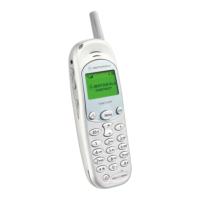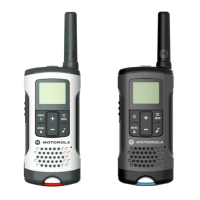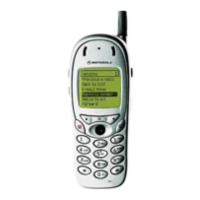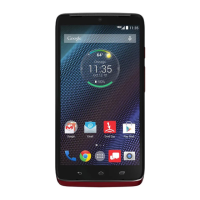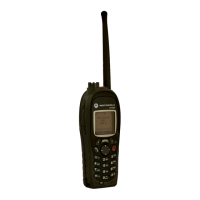16 ©2002 Motorola, Inc.
Cellular Overview
T720
Personal Communications Sector
Cellular Overview
Overall Concept
Cellular systems are used to provide radio-tele-
phone service in the frequency range of 824-894
MHz.
A cellular system provides higher call handling
capacity and system availability than would be
possible with conventional radiotelephone
systems that require total system area coverage
on every operating channel. The cellular system
divides the system coverage area into several
adjoining sub-areas, or cells.
Each cell contains a base station (cell site) which
provides transmitting and receiving facilities.
CDMA is a “spread spectrum” technology,
which means that it spreads the information
contained in a particular signal of interest over a
greater bandwidth than the original signal. With
CDMA, unique digital codes, rather than sepa-
rate RF frequencies or channels are used to
differentiate subscribers.
Table 4:
Note
The following description is intended only as a
preliminary general introduction to cellular
systems. This description is greatly simplified and
does not illustrate the full operating capabilities,
techniques, or technology involved in cellular
systems.
The codes are shared by both the mobile station
and base station and are called “pseudo-random
code sequences”. Since CDMA is a spread spec-
trum technology, all users share a range of the
radio spectrum. CDMA cell coverage is depen-
dent upon the way the network is designed. For
each system 3 characteristics must be consid-
ered: coverage, quality, and capacity. These 3
must be balanced for desired lever of perfor-
mance.
Some of the CDMA benefits are:
• Improved call quality with better and more
consistent sound.
• Enhanced privacy.
• Variable rate vocoder.
• Soft hand off.
CELL B
CELL CCELL A
CELL D

